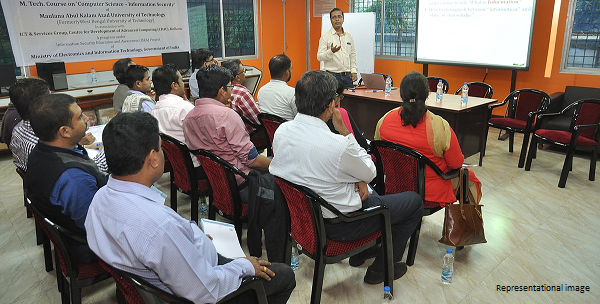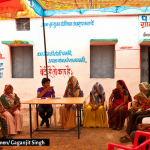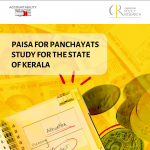
The Conundrum on Capacity Development of India’s Local Government Elected Representatives
17 March 2022
Have capacity development programmes for local government elected representatives and officials improved over the years?
Before answering that question, three preliminary questions need to be answered. These are: have the structural design of Panchayat Raj systems in states changed for the better? Second, have the inherent capabilities of Panchayat representatives improved? Third, have communication strategies improved, to enable improved pedagogies and more effective learning outcomes?
From the institutional design perspective, we are as far away from what is considered an ideal paradigm of devolution of powers and responsibilities to local governments, as we were two decades back. The foundation of this ideal paradigm for local government design is that devolved functions are to be clear, and then, finance is to follow function.
Design begins with a detailed activity mapping exercise that delineates the powers and responsibilities of local governments, followed by earmarking of matching budget that enables them to fulfil these mandates and ensuring that funds are transferred to them regularly.
Further, these functional and fiscal arrangements are to be operationalised by placing adequate and qualified staff with local governments so that they have the organisational capacities to carry out their responsibilities effectively.
We are nowhere close to achieving that ideal.
The local government system continues to be fractured and stagnant, stuck in a familiar rut, where lip service is given to the principles of devolution, but implementation is highly centralised.
In most states, activity mapping has been carried out in a nominal fashion. However, the activities devolved to local governments are not actually devolved, they are merely delegated to them to carry out as agencies of the government.
Fiscal devolution is as abysmal as ever. Barring a few states, none have created separate budget windows for earmarking funds to the local governments. The Panchayats are woefully bereft of flexible grants. Even though allocations to Panchayats have increased, as a proportion of the state’s budget, they remain as pitiful as before.
Some headway has been made in panchayats to raise their own revenues, but here too, it is the champions who are moving forward, not the states that have had a poor record at collecting their own revenues at the panchayat level.
Staffing to local government is still exclusively on deputation from the state level. Very little has changed; the old, tired model of the district administration being under the control and supervision of the District Collector continues. Even in champion states, staff are still borne on the state’s cadre, and local governments have little freedom and flexibility to hire their own human resource.
There is much better news regarding the inherent capabilities of local elected representatives.
The old stereotype of local government elected individuals being largely illiterate and therefore, ‘lacking capacity’, no longer prevails. Twenty years back when we began a satellite based training system for Panchayat members in Karnataka, only about 50 per cent of the elected representatives were comfortable with reading and writing. While the official illiteracy level was about 25 per cent, another 20 per cent could merely sign their names.
In stark contrast, among the latest bunch of elected representatives at the panchayats, about 9 per cent are illiterate. At least 41 per cent have completed their high school, or pre-university courses. Over 13 per cent are graduates, diploma holders or have higher qualifications.
Professionals such as doctors, engineers and lawyers are entering and winning elections (data obtained from the State Institute of Rural Development, Mysore). Such data are now emerging from other states too.
Meanwhile, communication technologies have exploded over the last 20 years. Two decades ago, cascading classroom-level training, through groups of resource persons was the followed mode, but it was expensive and quality could not be monitored.
In 2000, Karnataka’s satellite training system, by which TV programmes were broadcast to large numbers of elected representatives from a central studio, followed by local group discussions and phone-in question and answer sessions, was considered state of the art. Today, the data from Karnataka reveal that most elected representatives have smartphones. Nearly 50 per cent of them have social media accounts and email addresses.
To sum up, elected representatives are educated and they have avenues for communication that are on par, if not better, than their official colleagues. However, in contrast, the local government system continues to be fractured and stagnant, stuck in a familiar rut, where lip service is given to the principles of devolution, but implementation is highly centralised.
In such circumstances, continuing conventional approaches to training are a recipe for disaster. Repeatedly, training sessions end with searching questions. Elected representatives voice their immediate concerns — why do officials deputed to their local government not listen to them? Why do they not have control over such officials? Why does the government not provide enough funds to implement all the functions devolved unto the local governments? Why do departments issue circulars that directly contradict provisions empowering the local governments? They ask.
Resource persons are invariably ill equipped to give convincing answers, they can at best toe the official line and refrain from criticising the government. When this happens, elected representatives quickly lose interest in listening to homilies and begin to see information on how to beat the system through other channels.
Thus, one sees them sourcing information directly from government websites or latching onto trusted mentors to seek guidance.
Can the state institutes of Rural Development (SIRDs) adapt to this changing scenario?
Luckily, some have. The pandemic gave an impetus to interactive sessions through videoconferencing and some SIRDs jumped onto the bandwagon, initiating talks and discussions on pandemic management first, but soon spilling over into the management of other panchayat responsibilities as well.
This is the way forward; to make training more interactive, more flexible, more discursive and pinpointed to the needs of individual members. The new National Capability Building Framework will need to change its approach radically to be relevant in the current scenario.
T.R. Raghunandan is an Advisor at Accountability Initiative.
Also read: Investing in Champion Local Governments: A Case Study of Bangladesh





